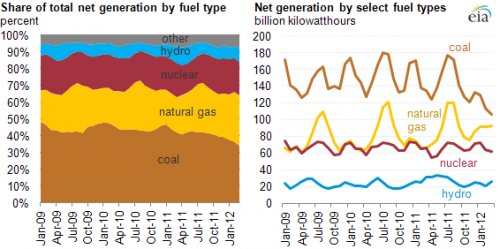Making Carbon Markets Work
David G. Victor and Danny Cullenward
Scientific American, Vol. 296: #6.
February,
2007.
pp. 70-77
Abstract:
Limiting climate change without damaging the world economy depends on stronger and smarter market signals to regulate carbon dioxide. Five ways to limit carbon emissions are basic to any attempt to unrealistically create markets out of thin air and to avoid market players from gaming the system.
"The challenge is immense. Traditional fossil fuel energy is so abundant and inexpensive that climate-friendly substitutes have little hope of acceptance without robust policy support."
p. 70.
"The successful U.S. acid rain reduction program, although it also allocated nearly all of its credits free of charge, has kept its core rules stable for nearly two decades, which has made it much easier for the marketplace to function properly."
p. 74.
"...China and India–pose the toughest obstacles to expanding emissions trading systems because the prioritize economic growth and rely heavily on fossil fuels."
p. 75.
Manipulating The
Market
CDM and the way itŠthe Clean Development MechanismŠis flawed & works
"An improved clean development mechanism will not be enough to get developing countries engaged, pressing them to cap their emissions will likely backfire."
p. 75-76.
A better way:
"China, for example, driven by worries of energy security, has moved to boost energy efficiency."
p. 76.
1,597 total world carbon trades in 2006. = ² 3.26% of emissions
49,000 total global greenhouse gas emissions in 2004.
"To place the lower number (1597 million metric tons) in context: If a midsize car emits around five (5 mt) metric tons of carbon diode per year, the global carbon market is equivalent to the annual CO2 output of 300 million autos (The U.S. has about 250 million passenger vehicles.)"
p. 76.
"Given the scale of the climate change and the consequences of delay, we recommend five steps toward a more effective strategy."
p 76.
Comparative reductions
amounts and actions proposed:
"plausible policy changes could cut CO2 emissions by a billion tons per year by 2020."
Examples amount of reduction anticipated
India's nuclear energy alternative 150 million metric tons / annum <
Entire E.U. effort under Kyoto targets 200 million metric tons / annum <
all the projects in the CDM (2006) 170 million metric tons / annum <
76
FIVE Ways to Curb Carbon
1. The U.S. government should institute a mandatory tax policy to control emissions. Taxes provide clear, long-term price signals so companies can invest intelligently to lower carbon emissions. In contrast, the volatility inherent in cap-and-trade systems hinders planning. Tax systems reduce opportunities for political favoritism and corruption. And taxes are easier to adjust when required."
2. If the U.S. sets up a cap-and-trade system, it should create a safety valve that will establish a price ceiling on carbon permits so that firms can reliably estimate compliance cost. All credits under a cap and trade system must be auctioned off to avoid political favoritism."
3. Industrialized nations must find ways to engage emerging countries in carbon emissions reduction. This process will require complex packages of policy reforms that are tailored to each country's specific circumstances."
4. Real leverage on emissions will require a combination of market-based climate policies (such as carbon taxes and smarter trading schemes) and regulations that accelerate the adoption of new technologies."
5. Governments must formulate active strategies to invent and demonstrate new large-scale, low emissions energy systems."
"To succeed the world must make progress on all five of these fronts. Although we need to get the science and engineering right, the biggest danger lies in failing to craft human institutions and policies that encourage people to reduce their emissions of greenhouse gases."
p. 77.

